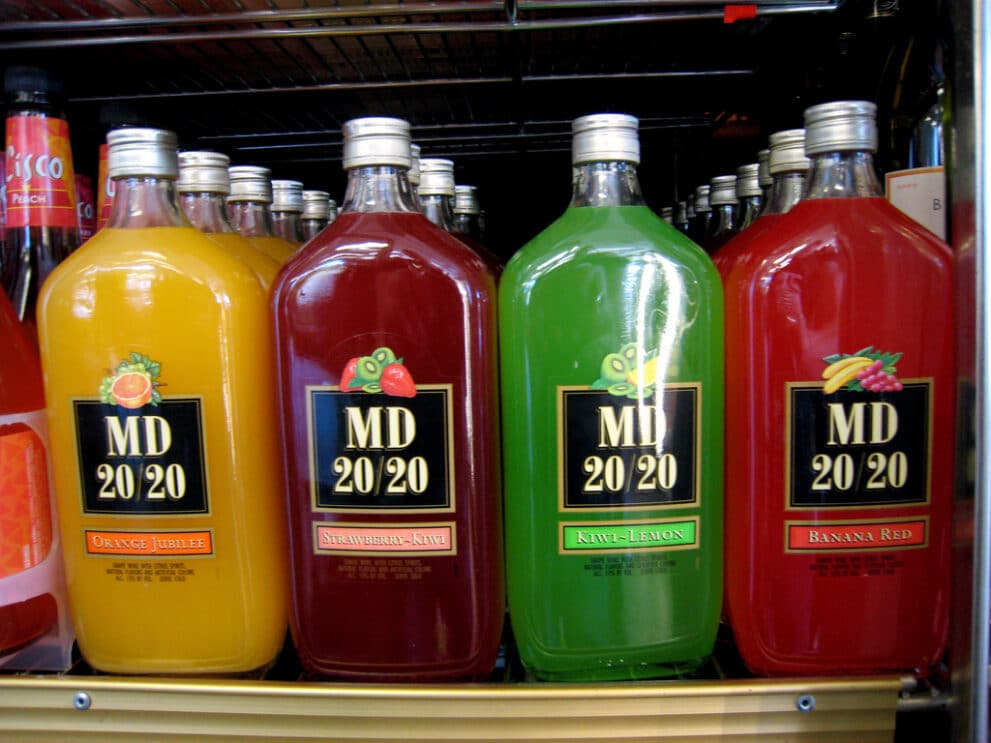
The drink “Cisco” refers to a fortified wine that gained notoriety in the United States during the 1990s for its high alcohol content and its marketing towards a younger audience. Cisco is often brightly colored and comes in a variety of fruit flavors, making it appealing to those looking for a sweet, potent alcoholic beverage. It contains about 13-20% alcohol by volume, depending on the flavor and formulation, positioning it between table wine and hard liquor in terms of strength.
Cisco became infamous for its effects, earning nicknames like “liquid crack” due to its potency and the intense intoxication it can cause. This led to significant controversy and scrutiny from consumer advocacy groups and regulatory bodies, which criticized its marketing practices and the potential risks it posed to its consumers, particularly younger ones.
In response to these concerns, regulatory actions were taken to curb the marketing and sale of Cisco in a manner that could appeal to underage drinkers. The product’s label, which once implied a lighter, more recreational beverage, was changed to more clearly communicate its high alcohol content and the dangers of excessive consumption.
Despite its controversial history, Cisco remains available in some markets, though it is far less prominent than it was during its peak popularity. As with any alcoholic beverage, it’s important to consume Cisco responsibly and be aware of its potency.
Where did the name Cisco come from?
The fortified wine known as Cisco was named by its manufacturer, and the specific reasoning behind the choice of the name “Cisco” isn’t widely documented. Names for alcoholic beverages, like those for many products, are often chosen for their catchiness, memorability, or the associations they might evoke in potential consumers. In the case of Cisco, the name may have been intended to convey a sense of fun and ease, aligning with the product’s marketing strategy that targeted a younger demographic looking for affordable and potent alcoholic options. The name “Cisco” is short, memorable, and distinct, which likely contributed to its branding and recognition in the market. However, without explicit statements from the company regarding the name’s origin, the exact rationale behind choosing “Cisco” remains speculative.
Who drank Cisco?
Cisco, the fortified wine known for its high alcohol content and fruity flavors, became a popular choice among young adults and college students during its peak popularity in the 1990s. Its appeal was largely due to its affordability, sweet taste, and the strong effects it could produce, making it particularly attractive to those looking for a cheap way to get intoxicated. The marketing of Cisco, along with its colorful packaging and variety of flavors, seemed to target a younger demographic, which contributed to its widespread consumption among this age group. However, its potent effects and the dangers associated with its consumption led to criticism and calls for regulation. The beverage’s reputation and the controversies surrounding it highlight the importance of responsible drinking practices and awareness of the risks associated with alcohol consumption.
What replaced Cisco?
Over the years, the popularity of alcoholic beverages has evolved, with different drinks rising to prominence as consumer preferences and market trends shift. While Cisco was known for its high alcohol content and appeal to younger drinkers in the 1990s, its place in popular culture has since been replaced by a variety of other alcoholic beverages that cater to similar desires for flavor, potency, and affordability.
In more recent years, the market has seen a surge in the popularity of flavored malt beverages, hard seltzers, and craft beers. These alternatives often offer a wide range of flavors, appealing packaging, and marketing that targets a youthful audience, much like Cisco once did. Hard seltzers, in particular, have gained significant traction for their low calorie content, refreshing taste, and variety of flavors, positioning them as a favored choice among health-conscious consumers and those looking for a lighter alcoholic option.
Additionally, the rise of craft breweries and the expanding market for artisanal and specialty spirits have shifted consumer interest towards quality, uniqueness, and the story behind what they’re drinking. This trend reflects a broader desire for authenticity and a deeper appreciation for the craftsmanship involved in producing alcoholic beverages.
While it’s difficult to pinpoint a single product that has directly replaced Cisco in popularity, the landscape of alcoholic beverages has certainly broadened, with more options available than ever before. This diversity reflects changing consumer preferences, with a growing emphasis on quality, flavor innovation, and responsible consumption.
Was Cisco part of rap culture?
Cisco, the fortified wine, did find its way into rap culture, particularly in the 1990s. During this time, references to alcohol and other substances were not uncommon in rap and hip-hop lyrics, as artists often drew upon their personal experiences and the realities of urban life in their music. Cisco became known for its potent effects and affordability, which contributed to its mention in the context of partying and socializing in some rap songs. The beverage’s popularity among young adults, combined with its notorious reputation, made it a symbol of rebellion and youth culture, which resonated with certain themes in rap music of the era. However, it’s important to note that while Cisco was part of the broader cultural landscape that rap music often reflects, it was just one of many products and brands mentioned in the genre. The inclusion of such references in rap lyrics typically serves to capture the nuances of contemporary urban life, rather than to promote the consumption of the products themselves.




 Share
Share Tweet
Tweet Share
Share




Comment